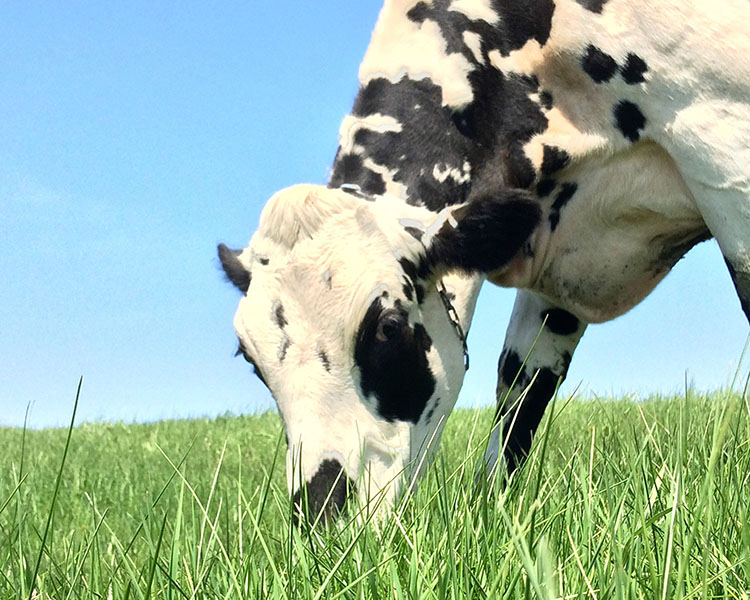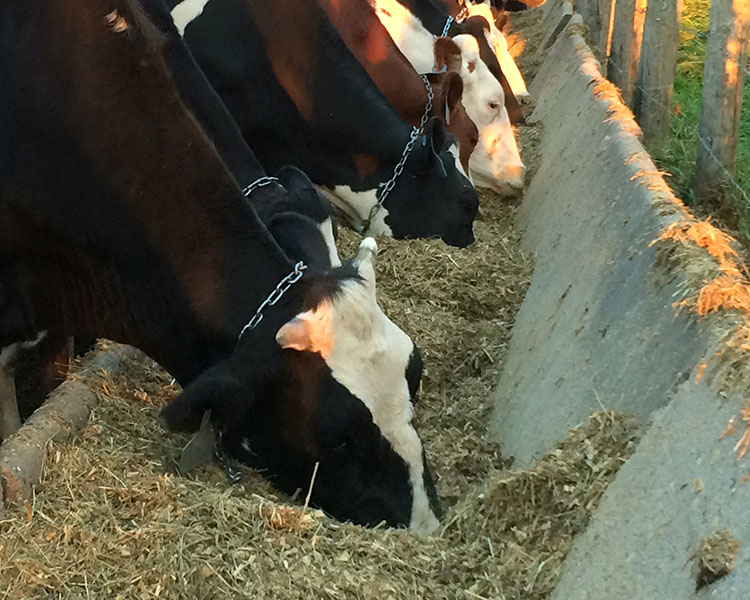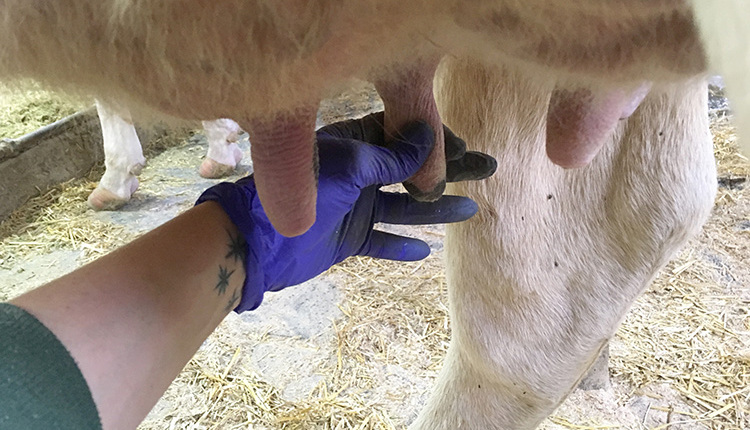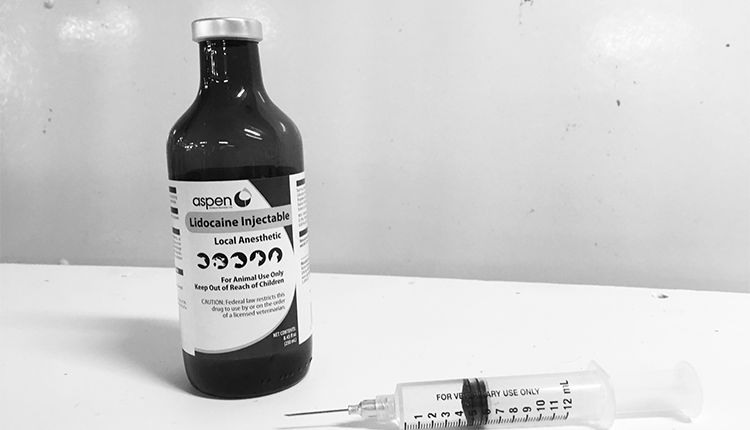
It’s November 8.
Most Americans are celebrating the long-awaited end of the political campaign season. Here in Minnesota, I’m celebrating the fact that a different season — our grazing season — is still going strong.
When we open the pasture gate in the spring, we never know for sure how long the cows will graze. To still be grazing in early November is certainly a gift from Mother Nature.
We were asked recently about how we make grazing work for us. The full answer wouldn’t fit into this post. The short answer is that we combine pasture with a partial mixed ration (PMR).
During the grazing season, we take forage samples of the pasture grass and estimate how much the cows are consuming. We use those numbers to balance a ration that also includes corn silage, alfalfa (as either dry hay, baleage, or haylage), fine ground dry corn, and protein mix.
We mix the PMR once a day and feed the PMR in feeder wagons and feedbunks. The cows eat most of the PMR before and after each milking.

For us, there are several advantages to providing our cows with both pasture and a partial mixed ration.
First, this ration keeps the microbial population in our cows’ rumens more stable. Our cows eat TMR in the winter, so if we put the cows out to pasture in the spring and took away the TMR, the rumen would undergo a significant change in the microbial population.
On our first farm, we didn’t feed a PMR, so this drastic change in diet resulted in both lower milk production and butterfat during the grazing season. Now, our production and butterfat drop a little during the summer, but not nearly as much.
Before we fed a PMR, it also took the cows longer to transition back to TMR in the fall. So by feeding a PMR during the grazing season, we keep the rumen population more stable and transition from season to season more smoothly.
The PMR also helps the cows balance their dry matter intake themselves. On really hot or rainy days when the cows don’t graze much, they will eat more PMR. If it looks like we’ll have several low-grazing days in a row, we’ll add dry grass hay to the PMR to help replace pasture.
The same is true when drought and high temperatures affect grass growth. When there’s less grass to graze or grass quality declines, we can adjust the PMR to compensate.
Feeding both pasture and PMR requires paying close attention to the cows. We monitor grazing patterns, PMR consumption, rumen fill, manure consistency, milk production, and components. By learning to interpret these signals from the cows, we can figure out what they need. Glen, my husband, then makes ration adjustments as needed.
Feeding a PMR while the cows are on pasture might seem like a lot of extra work, but it definitely pays off. Our cows are healthier and more productive because their diet is more consistent. And we all know that healthy, productive cows are every dairy farmer’s ultimate goal.

The author is a dairy farmer and writer from central Minnesota. She farms with her husband, Glen, and their three children. Sadie grew up on a dairy farm in northern Minnesota and graduated from the University of Minnesota with a degree in agricultural communications and marketing. She also blogs at Dairy Good Life.
THE UPCOMING WEBINAR









